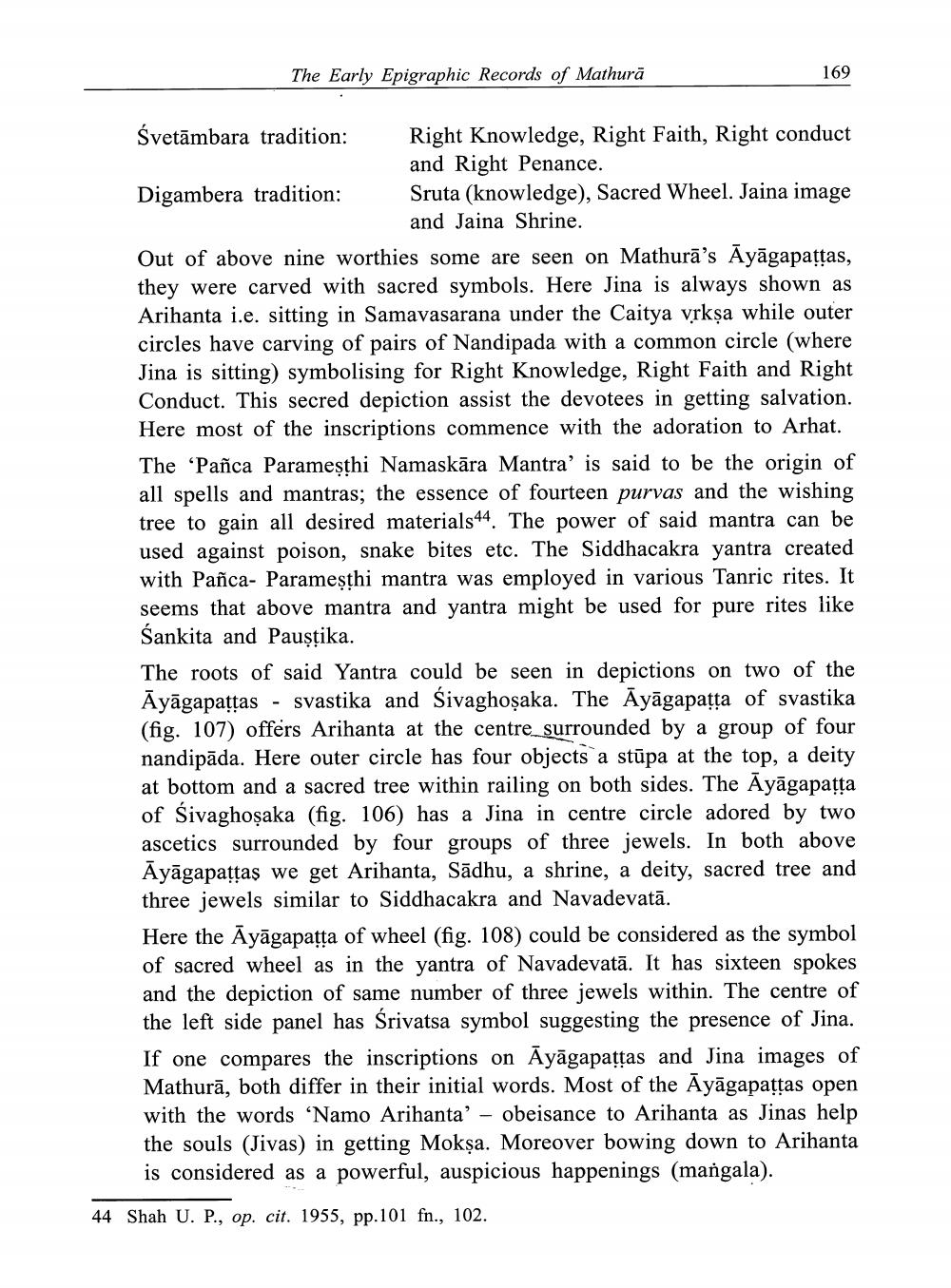________________
The Early Epigraphic Records of Mathurā
169
Śvetāmbara tradition: Right Knowledge, Right Faith, Right conduct
and Right Penance. Digambera tradition: Sruta (knowledge), Sacred Wheel. Jaina image
and Jaina Shrine. Out of above nine worthies some are seen on Mathurā's Āyāgapattas, they were carved with sacred symbols. Here Jina is always shown as Arihanta i.e. sitting in Samavasarana under the Caitya vrkṣa while outer circles have carving of pairs of Nandipada with a common circle (where Jina is sitting) symbolising for Right Knowledge, Right Faith and Right Conduct. This secred depiction assist the devotees in getting salvation. Here most of the inscriptions commence with the adoration to Arhat. The 'Pañca Paramesthi Namaskāra Mantra' is said to be the origin of all spells and mantras; the essence of fourteen purvas and the wishing tree to gain all desired materials 44. The power of said mantra can be used against poison, snake bites etc. The Siddhacakra yantra created with Pañca- Paramesthi mantra was employed in various Tanric rites. It seems that above mantra and yantra might be used for pure rites like Śankita and Paustika. The roots of said Yantra could be seen in depictions on two of the Ayāgapattas - svastika and Sivaghosaka. The Ayāgapatta of svastika (fig. 107) offers Arihanta at the centre_surrounded by a group of four nandipāda. Here outer circle has four objects a stūpa at the top, a deity at bottom and a sacred tree within railing on both sides. The Ayāgapatta of Sivaghoșaka (fig. 106) has a Jina in centre circle adored by two ascetics surrounded by four groups of three jewels. In both above Ayāgapattaş we get Arihanta, Sadhu, a shrine, a deity, sacred tree and three jewels similar to Siddhacakra and Navadevatā. Here the Āyāgapațța of wheel (fig. 108) could be considered as the symbol of sacred wheel as in the yantra of Navadevatā. It has sixteen spokes and the depiction of same number of three jewels within. The centre of the left side panel has Srivatsa symbol suggesting the presence of Jina. If one compares the inscriptions on Āyāgapattas and Jina images of Mathurā, both differ in their initial words. Most of the Ayāgapattas open with the words 'Namo Arihanta' - obeisance to Arihanta as Jinas help the souls (Jivas) in getting Moksa. Moreover bowing down to Arihanta is considered as a powerful, auspicious happenings (mangala).
44 Shah U. P., op. cit. 1955, pp.101 fn., 102.




